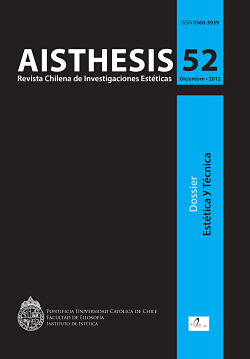Urban Machine: Guarded Bodies - Portrayed Streets
Main Article Content
Abstract
The first city photographs taken in Chile, initially by foreign travelers, could be read as the spatial design of a sociopolitical strategy. The analysis proposed in this article tries to deal with the neutrality of the photographic technique by highlighting the priority of sight that captures and designs the object within the symbolic struggles of the Nation-state. In this regard, photography allows disseminating a flexible hegemony. Its staging proposes a visual and architectonical hierarchy in the illuminated and solemn territories where authority and values lie down. Modernization imposes new optical anatomies to a city that rises from the colonial past to receive progress with their work disciplines and aesthetic seductions.
Downloads
Article Details

This work is licensed under a Creative Commons Attribution-NonCommercial-ShareAlike 4.0 International License.
All contents of this electronic edition are distributed under the Creative Commons license of "Attribución-shareAlike 4.0 Internacional" (CC-BY-SA). Any total or partial reproduction of the material must mention its origin.
The rights of academic works published in this publication belong to their authors., who grant to AISTHESIS: Revista Chilena de Investigaciones Estéticas the license for its use. The management of the permits and the authorization of the publication of the images (or of any material) that contains copyright and its consequent rights of reproduction in this publication is the sole responsibility of the authors of the articles
